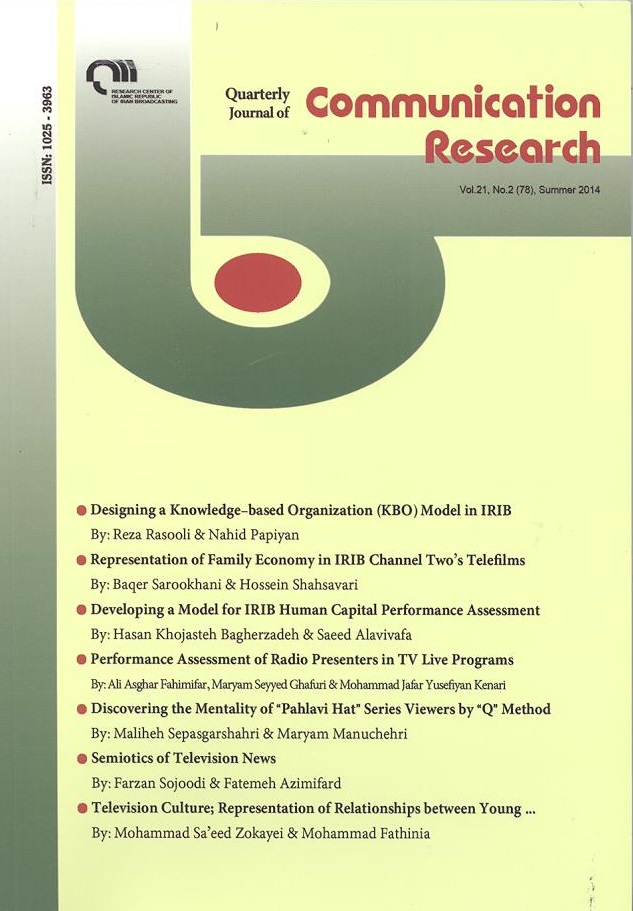Document Type : Original Article
Authors
1 associate Prof. in sociology, AllameTaba tabaee Uni
2 Communication
Abstract
The relationship between young boys and girls is a point of contention in the Iranian society and a concern for politicians and cultural officials. It is also one of the main and omnipresent themes of IRIB TV series addressing youths’ problems. IRIB in recent decade has paid a greater attention to the problem, particularly in its TV series and has tried to introduce a model based on religion and tradition in this regard. Using narrative analysis, the present article examines the way relationship between young boys and girls is represented in TV series in years 1383 to 1393 (Iranian calendar). The findings indicate that relationship between young boys and girls in the studied series is depicted according to one of the following patterns: mutual romantic relationship; one way romantic relationship; mutual rational relationship (value- based) along with least emotional connection; and social relationship (Islamic sisterhood and brotherhood). The third kind of discovered relationship under parents’ surveillance has been represented as “good” in the series. Other types have been somehow represented as “bad” or have been totally denied.
Keywords

